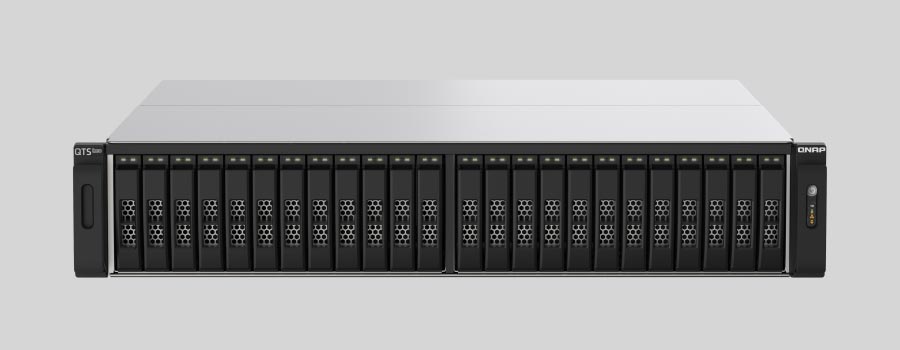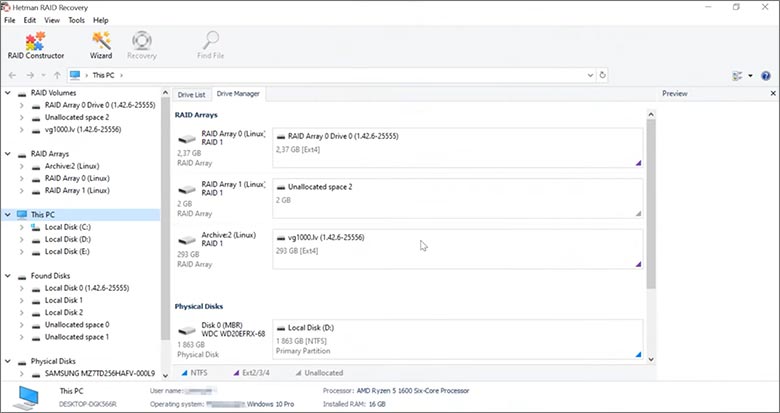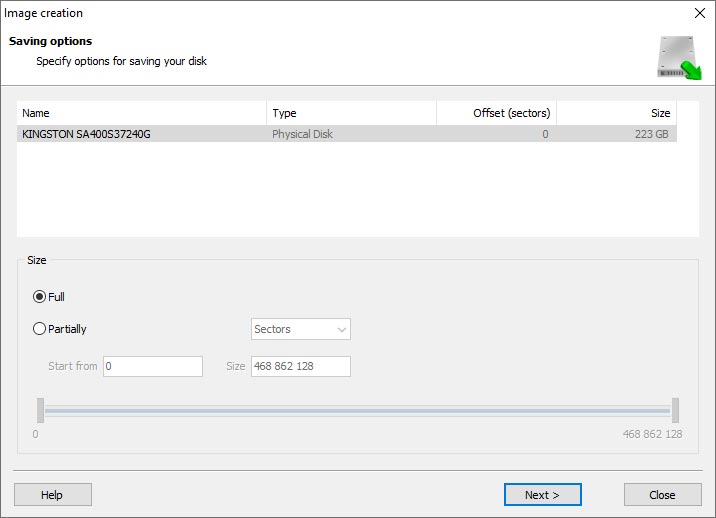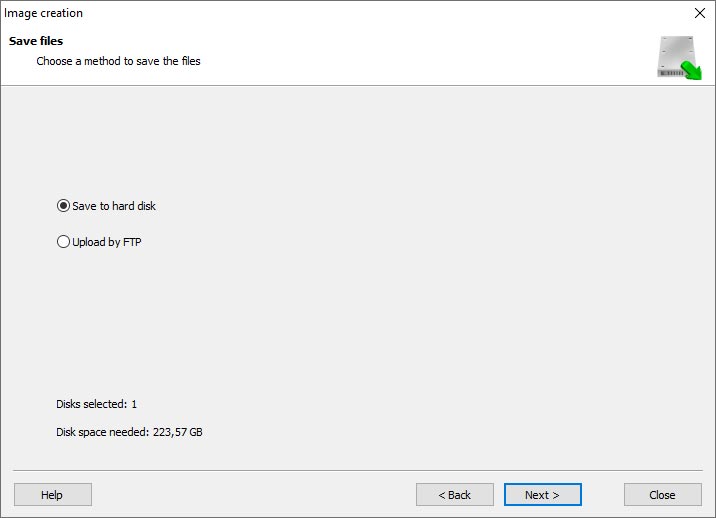
- Why can’t ordinary software tools restore files from RAID?
- This is important to know about NAS QNAP Turbo Station TS-h2490FU
- How to take hard disks out of the NAS and connect them to a PC?
Why can’t ordinary software tools restore files from RAID?
Conventional hard disks keep user’s data by writing it to their surface in a consecutive way, and this is how an entire file is stored on a single hard disk. However, when data is written to a RAID system, a file is divided into several parts. Then these parts are written consecutively to all hard disks within such array. The size of such parts may range from 2 KB to 2 MB, so each file is stored on several hard disks at the same time.
Such approach helps to speed up read and write operations, and it is evident that saving two parts of a file having the size of 1 GB to two hard disks simultaneously is much faster than saving the same 1 GB of data to one hard disk. However, this peculiarity makes file recovery more complicated.
Various RAID levels store information in different ways. Additionally, manufacturers like QNAP also introduce some modifications to this process, and that is why data can be written to hard disk in a wide variety of ways.
Can the type of file system used on NAS QNAP Turbo Station TS-h2490FU devices affect data loss risks?
Yes, the type of file system used on NAS QNAP Turbo Station TS-h2490FU devices can affect data loss risks. The file system is responsible for organizing and managing data on the storage device. Different file systems have varying levels of reliability, data recovery options, and support for features like data deduplication and snapshotting.
Some file systems, like ZFS and Btrfs, offer advanced data protection features such as checksumming, RAID-like capabilities, and built-in data scrubbing to detect and repair data corruption. These file systems can help mitigate the risk of data loss by providing mechanisms to detect and recover from errors.
On the other hand, older or less robust file systems may have limitations in terms of data integrity and recovery options. They may be more prone to data corruption or may not have built-in mechanisms to detect and repair errors. In such cases, the risk of data loss may be higher.
It is important to choose a file system that aligns with your data protection requirements and the level of risk you are willing to accept. Additionally, regular backups and proper storage management practices are essential to minimize the risk of data loss, regardless of the file system used.
How to take hard disks out of the NAS and connect them to a PC?
Although NAS Turbo Station TS-h2490FU can be accessed over the network, you still need to take the hard disks out of the storage device and connect them to a Windows computer. Only in this case will the software be able to scan them properly. Here is what you should do:
-
Turn off the storage and disconnect it from the power supply.
WARNING! Before you start taking hard disks out of your NAS device, read the manual carefully. Incorrect actions may damage your network-attached storage and/or the hard disks within the RAID system.
-
Take the hard disks out of the NAS one by one, carefully removing them from their slots. Remember that the disks are extremely vulnerable: hitting or dropping them may result in serious physical damage.
-
Make sure to mark each hard disk in accordance with how they were installed inside the NAS.
-
Remove the hard disks and connect them to the computer. In this video, we have explored what ports are used to connect hard disks, and what to do if there are not enough ports or connectors.
Go to view
Restoring data with Hetman RAID Recovery

This program recovers data from damaged RAID arrays and is fully compatible with QNAP Turbo Station TS-h2490FU. The hard disks that make up the RAID contain technical information about the algorithm used to save files. When launched, Hetman RAID Recovery reads this information and puts the damaged array together. Then you can open the disk and save your files. Also, you can recover the files accidentally deleted from the network drive.

How to recover data from a QNAP
Turbo Station TS-h2490FU has 24 HDD slots, and it supports the following array types:
- RAID 50;
- RAID 60;
- RAID 5;
- RAID 6;
- RAID 10;
- RAID 0;
- RAID 1;
- JBOD;
NAS supports:
- ZFS;
- EXT4;
- EXT3;
- exFAT;
- FAT32 (External Disk Only);
- NTFS (External Disk Only);
- HFS+ (External Disk Read Only);
Safe recovery from disk images
This utility lets you save an entire copy of the disk to file and then work with this image instead of the actual disk. Such feature helps to protect data on the disk from:
- Overwriting during the recovery process;
- Loss resulting from bad sectors;
- User mistakes.
To create an image, do the following:
-
Make sure that you have enough free space to save the image. The image file size usually equals the disk size.
-
Select the disk in the main window, and choose from the menu Tools – Save Disk. You can select multiple disks to be saved.
-
When the image creation wizard starts, you can choose to save the entire disk or select only a part of it. Specify the parameters and click Next.

-
At this stage, you need to choose a directory where to save the image. Choose any disk connected to this PC, or save the image by FTP.

Where are user’s files stored?
The QNAP Turbo Station TS-h2490FU network-attached storage keeps QTS (QuTS hero) operating system files on a separate RAID 1 (mirrored) array. Usually, all NAS systems create several volumes on every hard disk, and the first of them takes up to 2 Gb of space. This is where operating system files are stored. Other volumes are united into a RAID array where user’s data is written.
Comparison of software for RAID recovery
| Product | Operating system | License type | RAID controller support | Supported file systems | Virtual RAID controller support | Data recovery from damaged RAID | File preview |
|---|---|---|---|---|---|---|---|
| Hetman RAID Recovery | Windows | Paid | Yes, over 100 controllers | FAT, exFAT, NTFS, ReFS, APFS, HFS+, Ext4, Ext3, Ext2, ReiserFS, Btrfs, VMFS, Hikvision, XFS, UFS, ZFS | Yes | Yes | Yes |
| DiskInternals RAID Recovery | Windows | Paid | Yes, over 10 controllers | FAT, NTFS, Ext2/3/4, HFS+ | No | Yes | Yes |
| R-Studio | Windows, Mac, Linux | Paid | Yes, over 20 controllers | FAT, NTFS, Ext2/3/4, HFS+ | Yes | Yes | Yes |
| UFS Explorer RAID Recovery | Windows, Mac, Linux | Paid | Yes, over 100 controllers | FAT, NTFS, Ext2/3/4, HFS+ | Yes | Yes | Yes |
| EaseUS Data Recovery | Windows | Paid | Yes, over 20 controllers | FAT, NTFS, Ext2/3/4, HFS+ | No | Yes | Yes |
| ReclaiMe Free RAID Recovery | Windows | Free | Yes, over 100 controllers | FAT, NTFS, Ext2/3/4, HFS+ | Yes | Yes | Yes |




It is possible to recover data from a NAS device that has been affected by a power supply or voltage fluctuation issue. However, the success of data recovery depends on the extent of the damage caused by the power issue.
If the power supply or voltage fluctuation has caused physical damage to the hard drives in the NAS device, it may be necessary to send the drives to a professional data recovery service. They have specialized equipment and expertise to recover data from damaged drives.
If the power issue has not caused physical damage to the drives, it may be possible to recover the data by connecting the drives to a different computer or NAS device. In some cases, the NAS device may need to be repaired or replaced before attempting data recovery.
It is recommended to consult with a professional data recovery service or contact the manufacturer of the NAS device for further guidance on recovering data from a device affected by a power supply or voltage fluctuation issue.